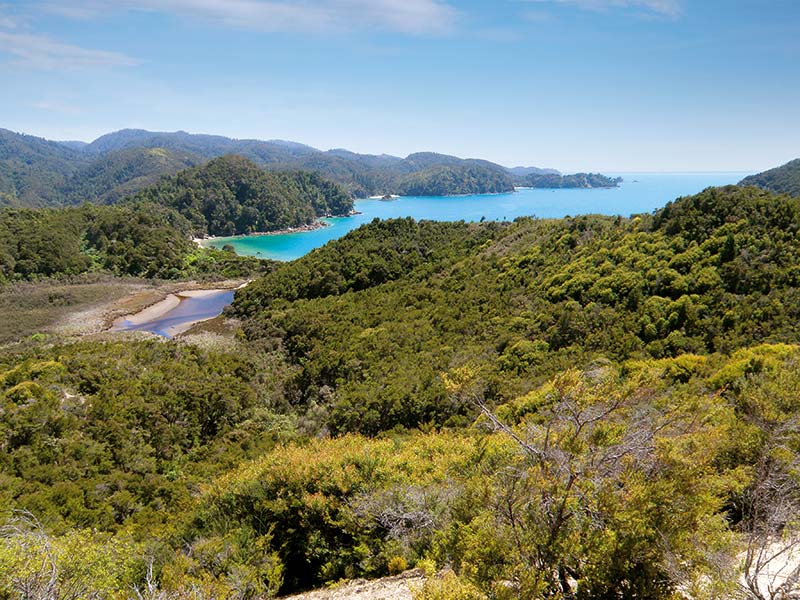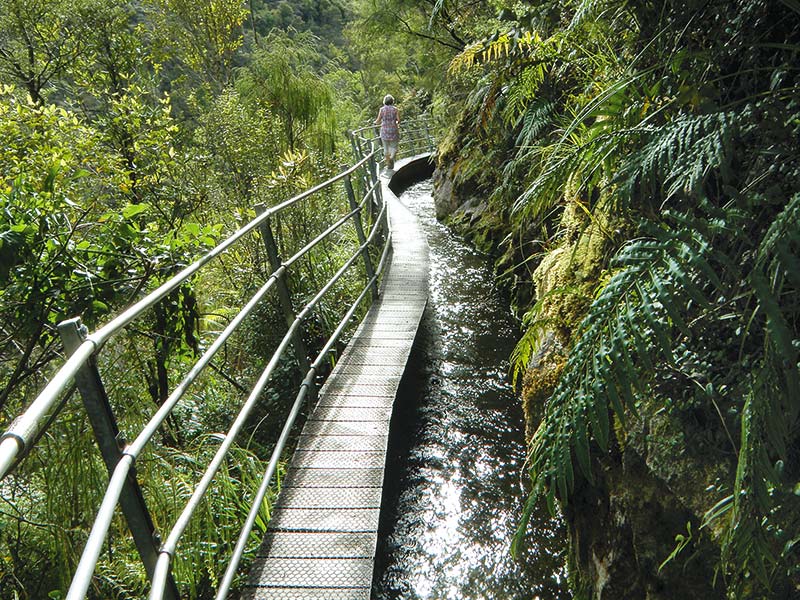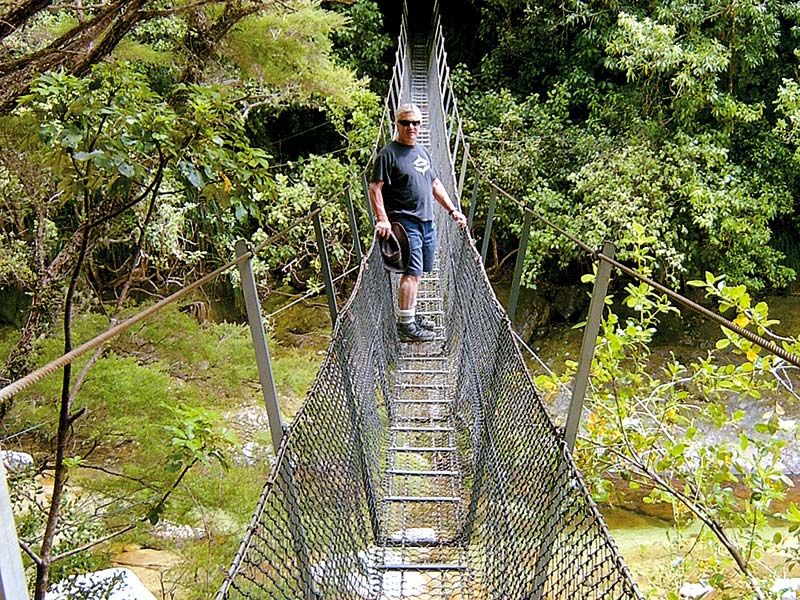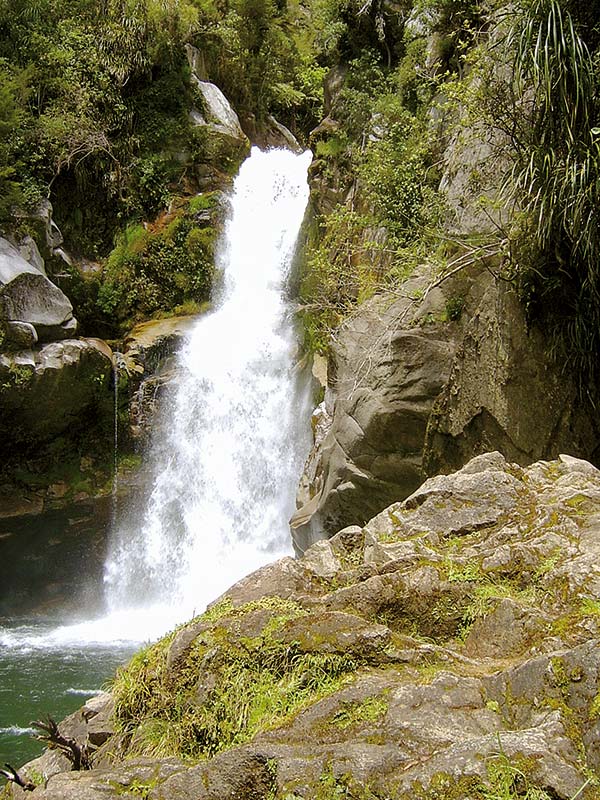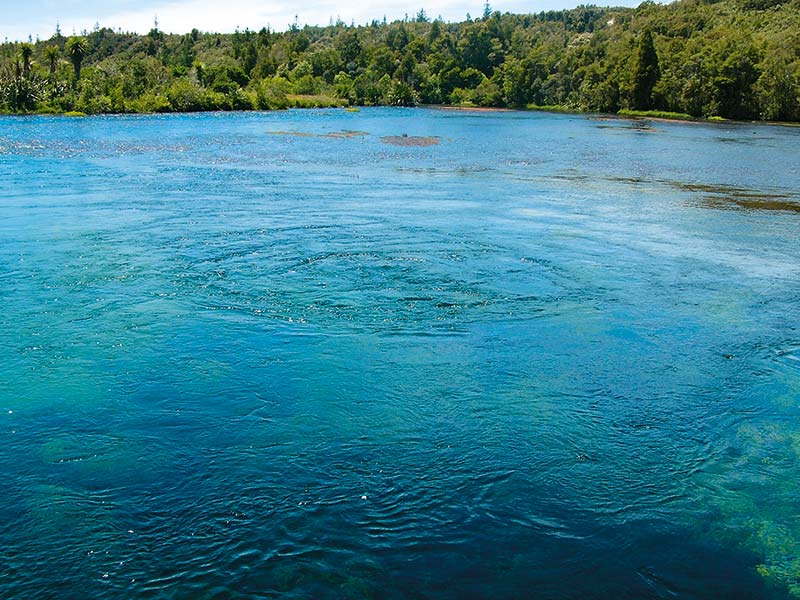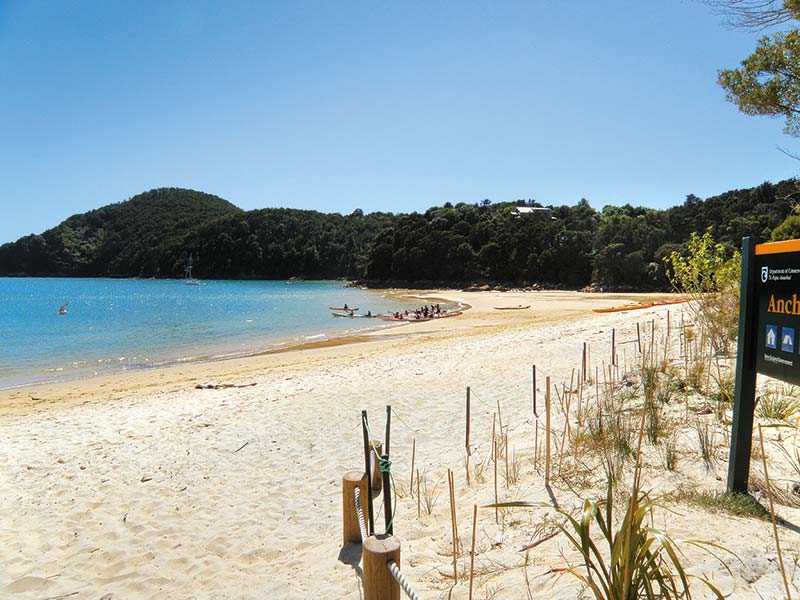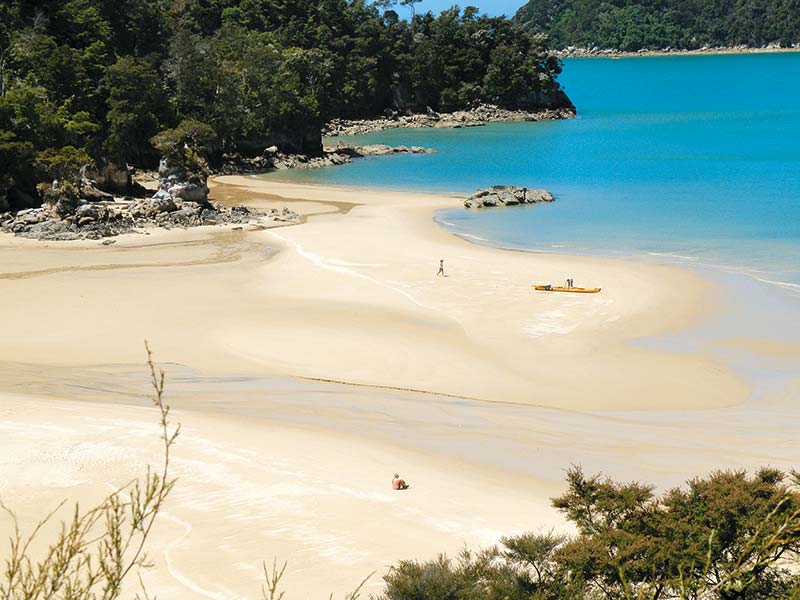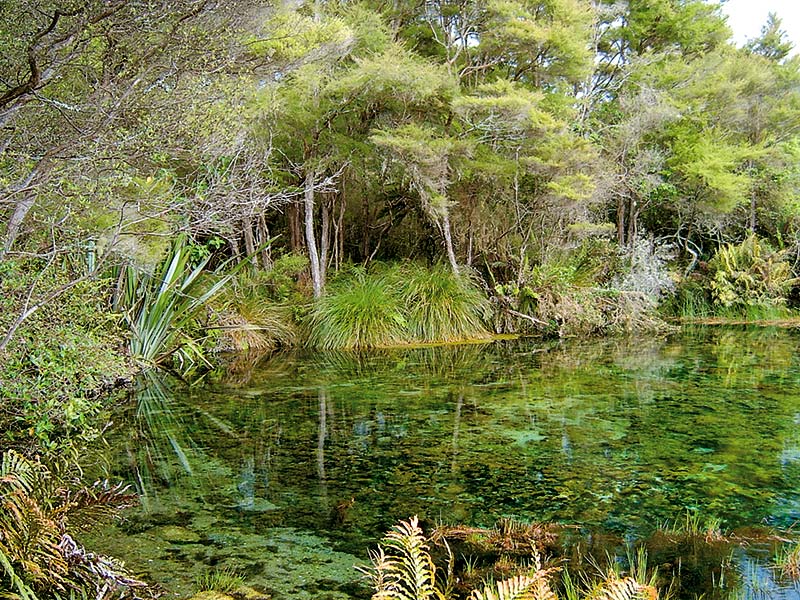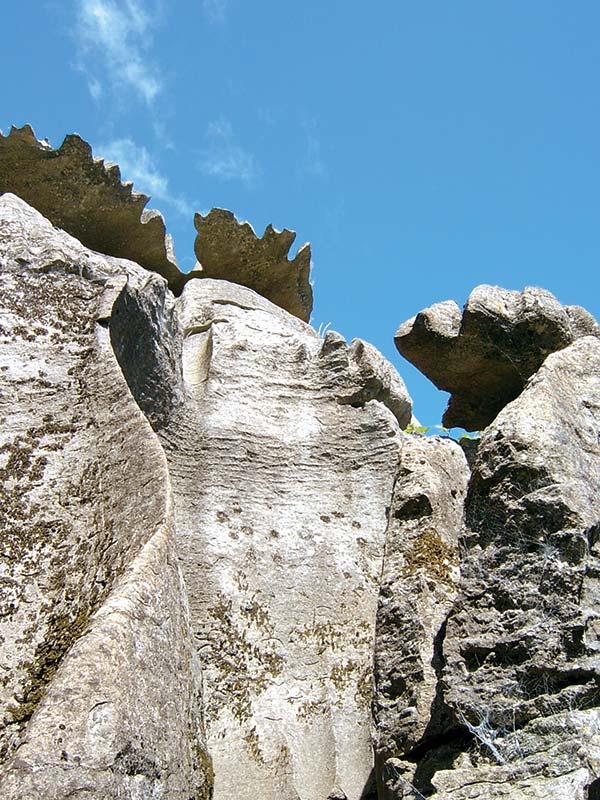'The Wainui Falls Track has four large slips on it. Sturdy footwear and a sense of adventure is necessary!' read the sign at the Wainui Bay car park where the track to the waterfall began.
Well one of us did and the other didn't in the shoe department – and as for the sense of adventure, of course, that's why we live on our bus. So we continued and we needn't have worried, the first slips had been worn smooth by the river and the ones on the far bank had been walked by others before us, creating new routes.
The 1.5km walk to Wainui Falls takes about 35 minutes from the car park – firstly along a wide riverside track beside farmland and across stepping stones where two small streams run into the river. Slowly the track gains height as it clings to cliff face before dipping down to the river briefly, then up again before coming to a footbridge. The footbridge is one of those wire ones that bounce alarmingly as you cross. Below the narrow bridge huge tree trunks lie across enormous rocks, testifying to the force of the current when it's in flood.
Two scrambles up, over and around the slips (noticing the tangled remains of vegetation in the river below) and the path passes through a grove of large nikau palms before turning a corner and stopping suddenly, beside and below the falls. The thunder of the water makes conversation difficult but it's a good spot for photos before starting back on the return journey.
Wainui Falls
Wainui Falls is one of highest waterfalls in the Golden Bay area and, despite the sign, they are easily accessed by people used to bush walking.
Wainui Bay is on the coast between Takaka and Totaranui, in the Abel Tasman National Park. There are plenty of campgrounds and freedom camping spots in the area which is famous for its fabulous coastline. We had a freedom camping place to ourselves, at the car parking area for the Pupu Hydro Walkway, nine kilometres from Takaka on Pupu Valley Road.
This is past the turnoff for the famous Te Waikoropupu (known as Pupu) Springs, the largest freshwater springs in New Zealand, the coldest in the Southern Hemisphere and among the clearest in the world. They are regarded as taonga (treasure) to Maori and are rightly considered a must-see for anyone in the area. Since we were last there, access to the springs has been upgraded and there is a new entranceway with interpretation panels and pou.
Hydro Walkway
The Hydro Walkway further up the valley is another treat, much less visited. The circular walk takes just under two hours and for part of its route it follows an historic gold miner's water race, later used for generating electricity.
Since we visited some years ago the Pupu Hydro Society have worked to upgrade the track, build a bridge over the river and create the four-wheel drive (Jim's Track) that makes the circuit back to the car park. The first part of the track crosses a bridge then zigzags up the hillside through beech and podocarp forest until it reaches the water race. This is quite steep and takes about half an hour. There is a pipe here that drops the water 107 metres down to the powerhouse and turns the turbine. There are also views down to the Waikoropupu Valley where we saw our bus, looking tiny tucked in beside the bush.
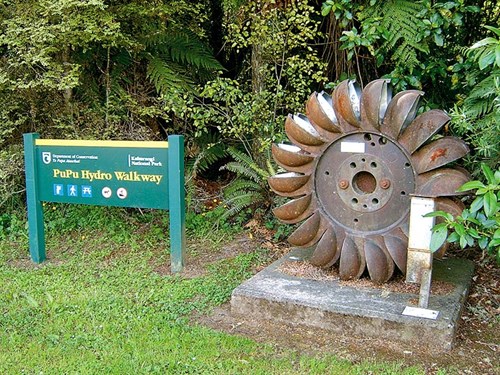
The next section is the most interesting as it runs on narrow walkways and aqueducts beside the rushing water for almost two kilometres. The water race was originally built in 1901-1902 by 24 men working for the Takaka Sluicing Company to sluice gold from the river gravels. It takes another half an hour to reaches Campbell Creek, where the water race has its intake.
Jim’s Track
The final hour of the walk meanders slowly down Jim's Track, named in memory of Jim Baird who was the driving force behind the hydro restoration.
There is a plaque in his memory at the powerhouse near the end of the track. The powerhouse also has a viewing room and information explaining how it first generated electricity for Golden Bay 1929 and how, since restoration, it continues to do so. The restored powerhouse was opened in 1988 by Hilda Campbell, daughter of Charlie Campbell who once sluiced for gold on the mountainside.
Having walked beside a river and a water race we next headed for a walk beside the ocean. A few years ago we had walked part of the Abel Tasman National Park, taking a water taxi from Totaranui.
Now we wanted to walk the other end of the track and this involved driving over Takaka Hill. State Highway 60 snakes its way over the hill's 791-metre height and we held our breath as the bus was suffering from overheating problems. After a stop to cool down we finally reached the summit where there are caves to explore and strange marble rock formations to wander amongst.
Marahau
At Marahau we stayed in the pleasant camp ground just back from the beach. We parked at the DOC car park and walked along the track to Apple Tree Bay. From here we took a water taxi (they can be booked at Marahau or Motueka) to Anchorage Bay and disembarked at the beautiful white sandy beach. A short steep walk took us to our lunch spot with fantastic views along the coast.
From there the walk back to Marahau took around four hours as the track wound its way along the coastline. Every bend had a new stunning view and though the track is mainly shaded by bush we still needed to apply plenty of sun screen.
Another fabulous beach near Marahau is Split Apple Bay. A short walk from a small parking area leads down to the beach where a huge, spherical granite boulder sits in the water, split in two pieces. At low tide you can wade out to it, offering great photo opportunities. We explored the nearby caves then relaxed with a picnic on the beach.
There is always somewhere good to walk (and relax) near the water in this part of the world.
For the latest motorhome reviews and road trip destinations, subscribe to Motorhomes, Caravans & Destinations magazine here.

